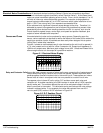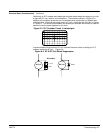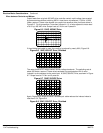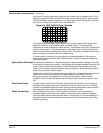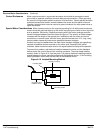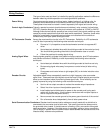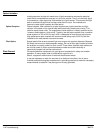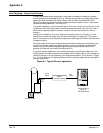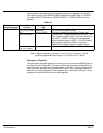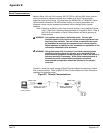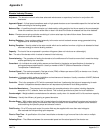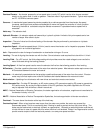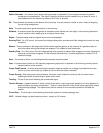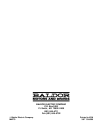
Section 1
General Information
Appendix C-3MN770
Pattern Generator – An external circuit board used to generate an adjustable S–curve speed command for smooth
acceleration and deceleration. This signal is used by the motor control instead of any on–board S–curve. It
uses feedback from the elevator by means of a DC tach or encoder.
Pit – The area below the elevator at the bottom of the hoist way. It usually contains a buffer or other means of stopping
the car during emergencies.
Rails – The steel tracks which guide the elevator in the hoist way.
Rollback – A condition where the holding brake is released and the elevator car rolls slightly in the hoist way before the
control is able to hold it steady prior to moving to the next stop.
Ropes – The steel cables used to suspend the car and counterweights.
Running Field – On a DC control, the normal field voltage setting which provides rated field voltage to the motor for most
conditions.
Sheave – A drum mounted on the output shaft of the traction machine gearbox or the armature of a gearless motor on
which the cables holding the elevator are wrapped. This rotates to drive the elevator.
Standby Field – On a DC control, the field voltage setting which provides a reduced field voltage to the motor allowing the
field to be continuously energized. It is the same as field economy in industrial applications, usually 67% of
rated field voltage.
Stop – The number of floors in the building where the elevator may be boarded.
Tape – A punched tape (similar to a NC machine programming tape) which is attached in the hoist way providing actual
elevator position to the controller.
Torque Feed Forward – A control scheme where the elevator weight is sensed and a voltage is provided to the motor
control as a trim to eliminate any rollback of the car when the brake is released.
Torque Proving – After closing the motor contactors, the motor control checks for continuity with the motor before
releasing the brake and providing full power to the motor.
Tracking – The act of the control following the commanded signal.
Traction Elevator – A geared elevator in which a motor drives either a right angle worm gearbox or an inline gearbox for
speed reduction and torque multiplication. “Traction” comes from the friction of the ropes gripping the sheave
and preventing slippage. The ropes usually have a number of turns around the sheave to increase the
traction.
Turned Over – The final step in commissioning the elevator system for normal passenger use.
VVVF – Variable voltage, variable frequency control – usually an AC inverter.



